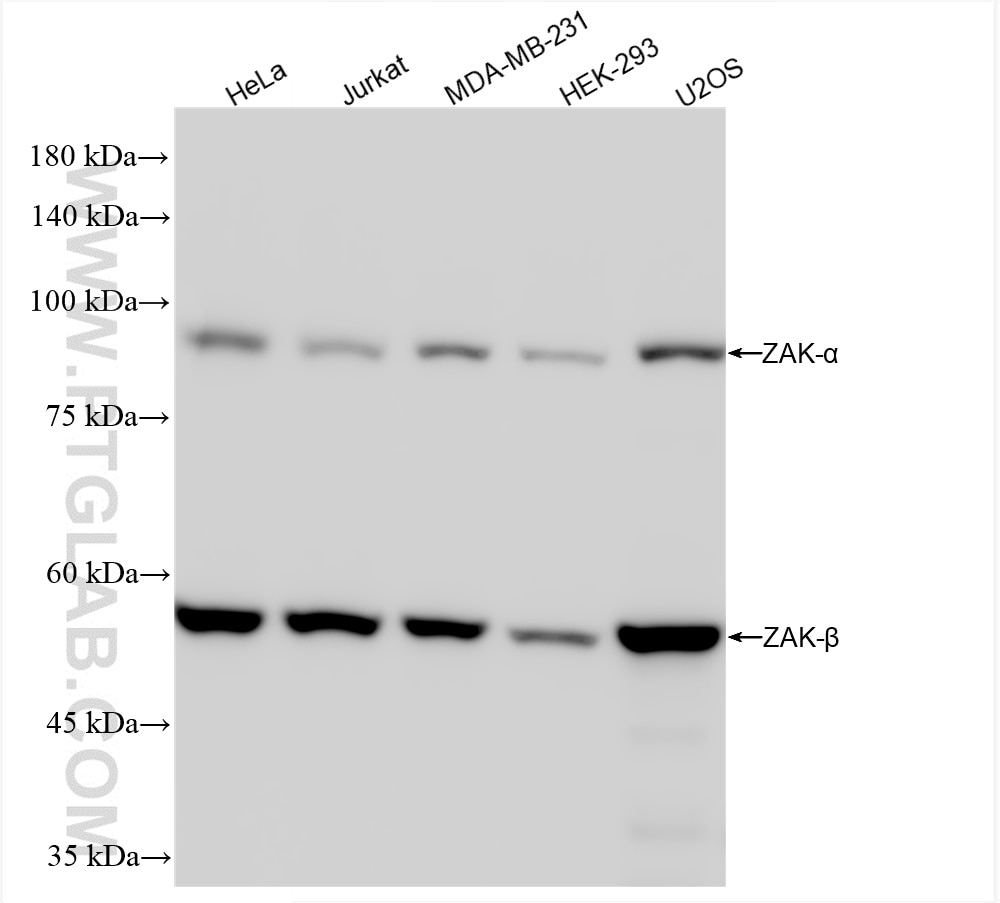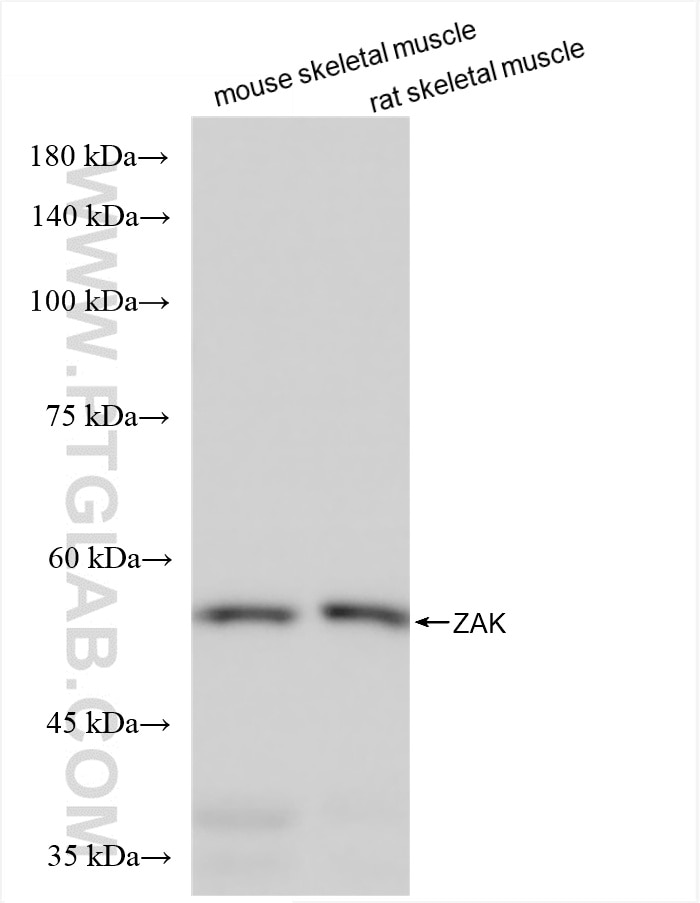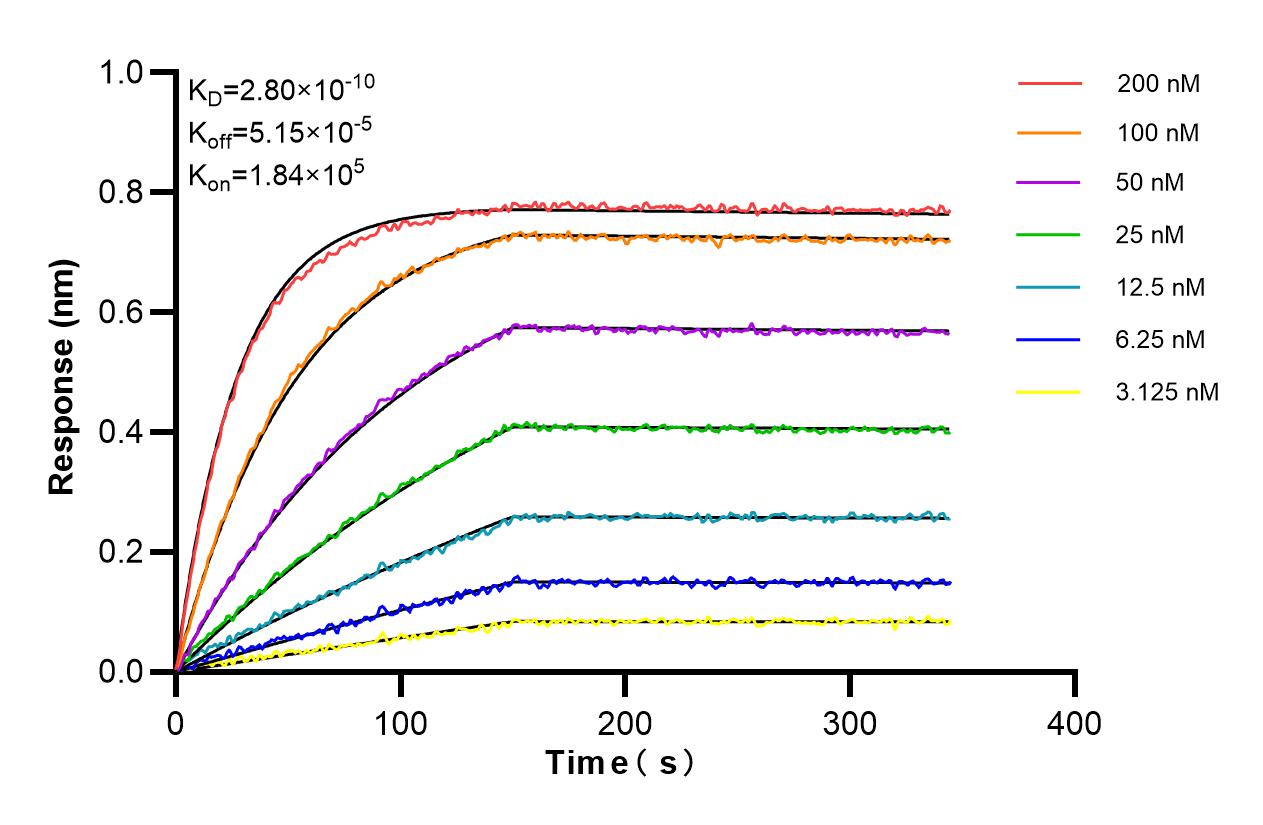Validation Data Gallery
Tested Applications
| Positive WB detected in | HeLa cells, mouse skeletal muscle tissue, Jurkat cells, MDA-MB-231 cells, HEK-293 cellls, U2OS cells, rat skeletal muscle tissue |
Recommended dilution
| Application | Dilution |
|---|---|
| Western Blot (WB) | WB : 1:2000-1:10000 |
| It is recommended that this reagent should be titrated in each testing system to obtain optimal results. | |
| Sample-dependent, Check data in validation data gallery. | |
Product Information
81161-2-RR targets ZAK in WB, ELISA applications and shows reactivity with human, mouse, rat samples.
| Tested Reactivity | human, mouse, rat |
| Host / Isotype | Rabbit / IgG |
| Class | Recombinant |
| Type | Antibody |
| Immunogen |
CatNo: Ag30599 Product name: Recombinant human ZAK protein Source: e coli.-derived, PGEX-4T Tag: GST Domain: 223-325 aa of BC001401 Sequence: ERLTIPSSCPRSFAELLHQCWEADAKKRPSFKQIISILESMSNDTSLPDKCNSFLHNKAEWRCEIEATLERLKKLERDLSFKEQELKERERRLKMWEQKLTEQ 相同性解析による交差性が予測される生物種 |
| Full Name | sterile alpha motif and leucine zipper containing kinase AZK |
| Calculated molecular weight | 91 kDa |
| Observed molecular weight | 91kDa, 51 kDa |
| GenBank accession number | BC001401 |
| Gene Symbol | ZAK |
| Gene ID (NCBI) | 51776 |
| Conjugate | Unconjugated |
| Form | |
| Form | Liquid |
| Purification Method | Protein A purification |
| UNIPROT ID | Q9NYL2 |
| Storage Buffer | PBS with 0.02% sodium azide and 50% glycerol{{ptg:BufferTemp}}7.3 |
| Storage Conditions | Store at -20°C. Stable for one year after shipment. Aliquoting is unnecessary for -20oC storage. |
Background Information
ZAK(sterile-alpha motif and leucine zipper containing kinase AZK) is also named as MLTK, MAPKKK, mlklak, MLK7, AZK, MLT, MRK, HCCS-4, MAP3K20 and belongs to the MAPKKK family. It is a mitogen-activated protein kinase kinase kinase (MAP3K) that activates the stress-activated protein kinase/c-jun N-terminal kinase pathway and activates NF-kappaB. ZAK contributes to regulation of DNA damage checkpoints through a p38 gamma-independent pathway. This protein has 3 isoforms produced by alternative splicing with the MW of 91 kDa (ZAK alpha), 51 kDa (ZAK beta) and 35 kDa.
Protocols
| Product Specific Protocols | |
|---|---|
| WB protocol for ZAK antibody 81161-2-RR | Download protocol |
| Standard Protocols | |
|---|---|
| Click here to view our Standard Protocols |



